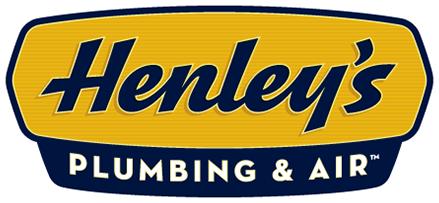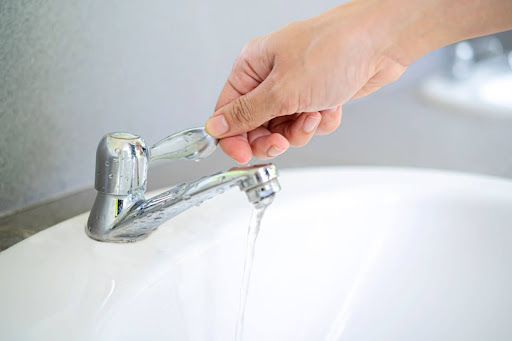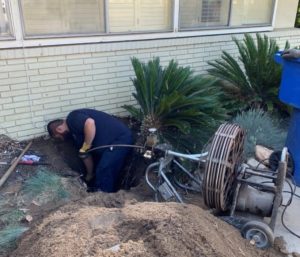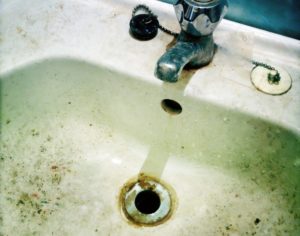It starts with a single faucet. You notice the water pressure is weaker than usual, and you brush it off as no big deal. Then, the same issue pops up in the shower, the kitchen sink, and even the garden hose. Suddenly, you’re left wondering, “Why is my water pressure so low?
For homeowners, water pressure issues can be incredibly frustrating. Thankfully, there are several potential causes, many of which can be addressed with a little troubleshooting — or with the help of a trusted professional like Henley’s Plumbing & Air. Let’s break down the common reasons for low water pressure and give you tips on getting things back to normal.
What Is Considered Typical Water Pressure?
Before diving into what causes low water pressure in the whole house, it’s helpful to know what “normal” water pressure should look like. Typical water pressure in most homes ranges between 40 to 60 pounds per square inch (PSI). If the pressure dips below this range, you might notice weaker water flow, especially when multiple fixtures are in use.
A quick way to measure your home’s water pressure is with a water pressure gauge, which you can find at most hardware stores. Attach the gauge to a hose spigot, turn the water on, and see where your pressure stands. If it’s below 40 PSI, it’s time to investigate further.
Signs Your Water Pressure Is Low
Sometimes, low water pressure sneaks up on you, while other times, it’s blatantly obvious. Here are a few common indicators:
- Faucets and showerheads deliver a weak stream.
- Appliances like dishwashers or washing machines take longer to run.
- Water flow drops significantly when more than one fixture is in use.
- Sudden changes in pressure, especially during peak water usage times.
These symptoms are your cue to dig into the root cause — or call a professional plumber if the issue persists.
Common Reasons for Low Water Pressure
More than one factor can explain why your water pressure is low. Let’s go over the usual suspects so you can find the source and restore proper pressure to your home.
Partially Closed Water Meter Valve
The main shut-off valve is the control point for water entering your home. If it’s partially closed, it restricts water flow, leading to low pressure.
A valve might not be fully open after maintenance or repairs. Inspect it by locating the valve (usually near the water meter or an exterior wall) and making sure it’s fully open. Turn it counterclockwise until it stops to allow maximum water flow. If your valve is open and pressure is still low, it’s time to investigate further.
Issues With the Pressure Regulator
A pressure regulator is designed to keep water pressure at safe levels, but like any component, it can fail over time. A broken pressure regulator can cause sudden drops in water pressure or fluctuations throughout the day.
If you suspect this is the issue, you’ll likely need a professional plumber to inspect or replace it. Restoring proper water pressure might require recalibrating or installing a new regulator.
Clogged Pipes
Over time, mineral deposits and sediment buildup can clog your pipes, especially in areas with hard water. These clogs restrict water flow, leading to a noticeable drop in pressure.
Galvanized steel pipes are particularly prone to this problem as they corrode with age. If mineral buildup clogs pipes in your home, repiping may be the best solution. Consider replacing your outdated pipes with modern materials like copper or PEX. Henley’s Plumbing & Air offers whole-house repiping in the Inland Empire, so don’t hesitate to call us to schedule your appointment.
Water Leaks
A hidden leak in your plumbing system can significantly reduce water pressure. Leaking pipes not only waste water but also affect the overall pressure in your home.
Since leaks are often what causes low water pressure in the whole house, it’s essential to inspect your home. A proactive approach can save you from unnecessary problems. To check for leaks, look for damp spots, unexplained water usage spikes, or even hissing sounds near your pipes. Your local plumber can identify and repair leaky pipes to fix low water pressure and protect your home from water damage.
Problems With the Water Heater
If the pressure is only low when using hot water, your water heater could be the culprit. Sediment buildup inside the tank or issues with the water heater’s pressure settings can restrict water flow.
Flushing the tank or adjusting the temperature settings may help. If the problem persists, a professional plumber can assess whether repairs or a replacement is necessary.
Municipal Water Supply Issues
Sometimes, the issue isn’t inside your home at all. Problems with your municipal water supply, such as maintenance or a broken main city supply pipe, can temporarily lower pressure.
Contact your water supplier if you suspect this is the case. They can confirm if the pressure issue is due to repairs or high water demand in your area.
Clogged Plumbing Fixtures
Individual fixtures like faucets and showerheads can become clogged with mineral deposits or sediment over time. This buildup restricts water flow and can create pressure issues at specific outlets.
Cleaning or replacing affected fixtures can resolve the problem. Flow restrictors and aerators can also cause low water flow — cleaning these components may help water flow more freely.
High Water Demand
If too many fixtures or appliances are running simultaneously, your home’s water demand may exceed the system’s capacity. This can lead to a noticeable drop in pressure.
Could your family’s water usage be the reason why your water pressure is low? Spacing out water usage — like running the washing machine at night instead of during peak times — can help. In some cases, installing a booster pump may be necessary to handle high demand.
Get Your Water Pressure Back Up With Henley’s Plumbing & Air!
Is low water pressure fixable? Absolutely. The first step is identifying what causes low water pressure in the whole house. Simple fixes, like adjusting valves or cleaning fixtures, can work wonders, while more complex issues may require professional intervention.
Henley’s Plumbing & Air is here to help. We’ve been serving the Inland Empire since 1983, offering reliable, friendly service that homeowners trust. If you’re struggling with pressure issues, contact us to learn more about our plumbing services in San Bernardino, CA, and the surrounding areas of:
- Riverside
- Fontana
- Redlands
- Calimesa
- Cherry Valley
- Woodcrest
- Chino
- Chino Hills
- Ontario
- Anaheim
- Jurupa Valley
- Eastvale
- Corona
- Norco
- And more!
We’ll diagnose the problem, explain your options, and get your home’s water flowing freely again!




